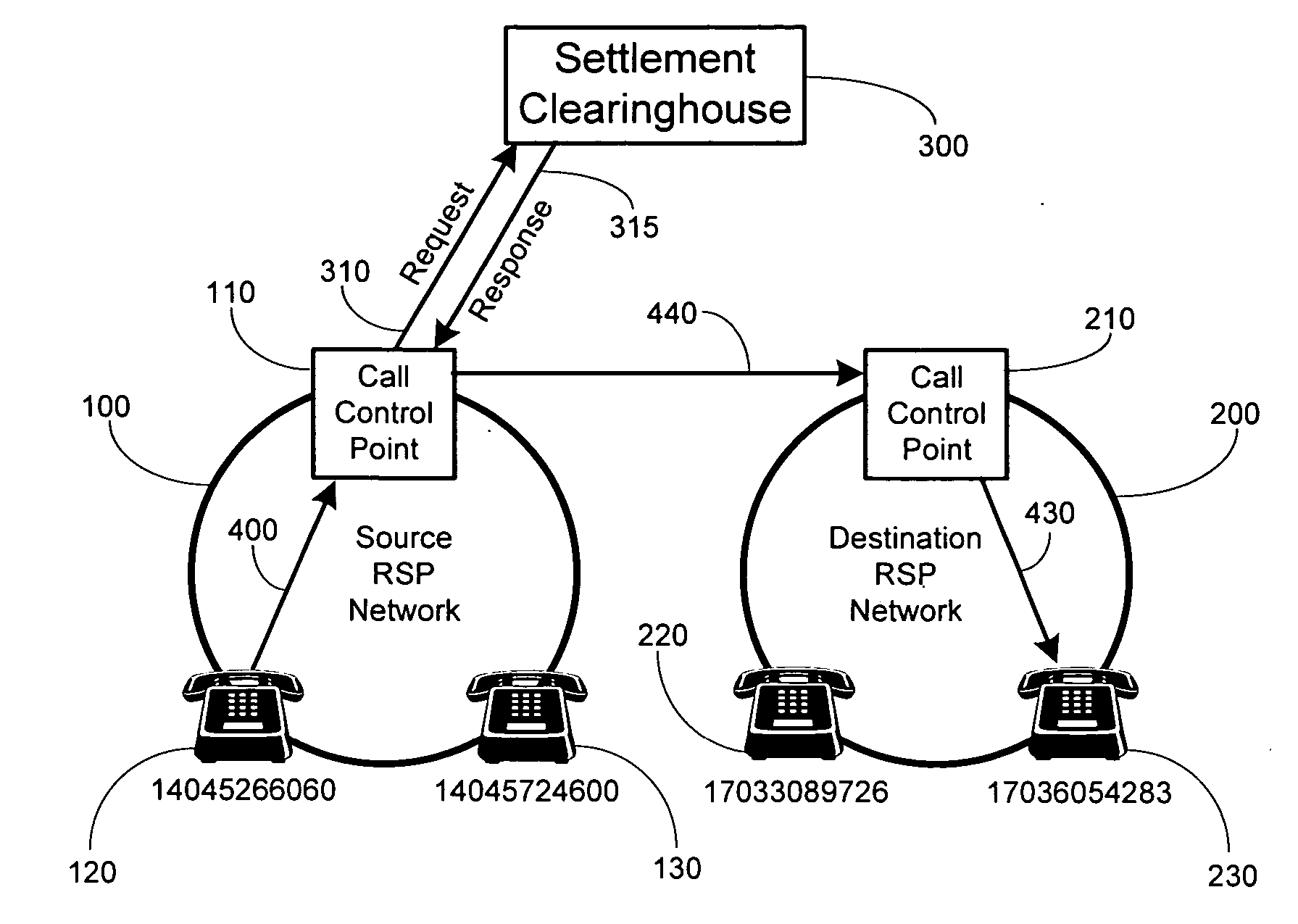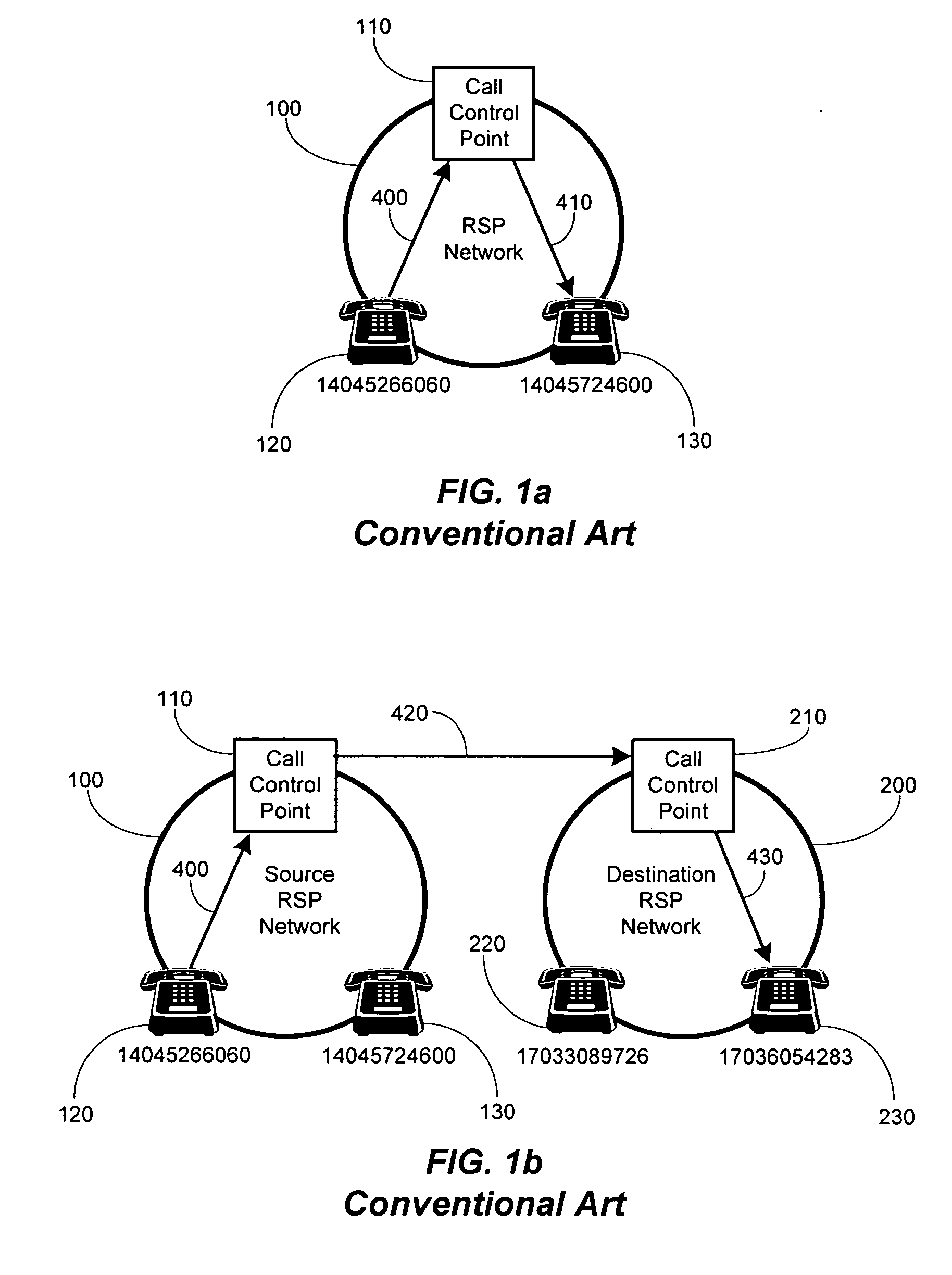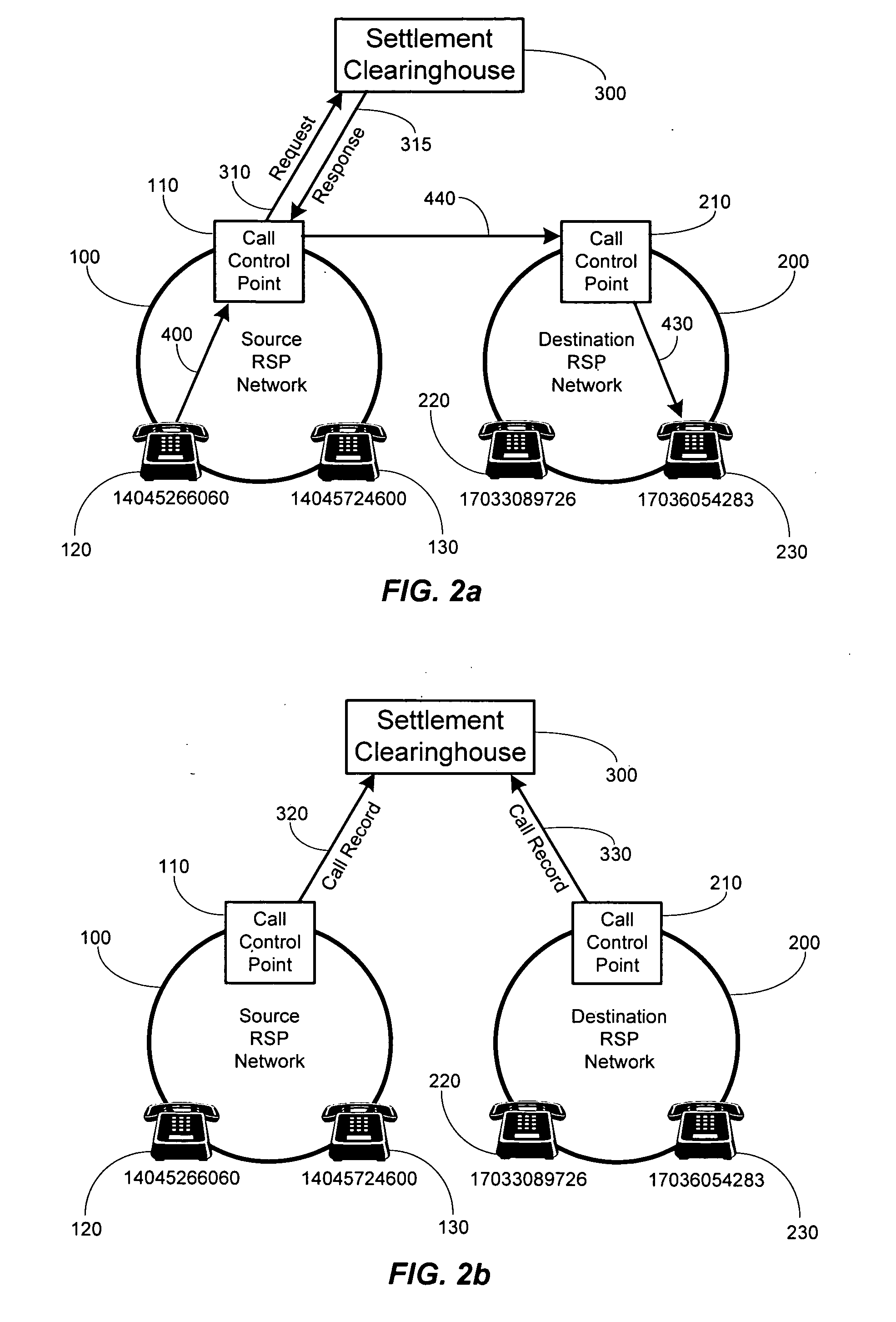Method and system for securely authorized VoIP Interconnections between anonymous peers of VoIP networks
a peer-to-peer network and anonymous peer technology, applied in the field of secure authorization of voip interconnection access control between anonymous peers of voip networks, can solve the problems of inability to implement the calling party pays business model with a peer-to-peer operating model, inability to implement bilateral agreements among rsps, and virtually impossible to large-scale peer-to-peer networks using the calling party pay business model
- Summary
- Abstract
- Description
- Claims
- Application Information
AI Technical Summary
Benefits of technology
Problems solved by technology
Method used
Image
Examples
Embodiment Construction
[0031] A settlement clearinghouse or peering authority can comprise a common trusted third party for all peers of VoIP networks. The settlement clearinghouse can exchange digital certificates with each peer and use asymmetric key cryptography to establish and manage a trusted, bilateral relationship with each peer. These trusted bilateral relationships between each peer and the settlement clearinghouse can enable the settlement clearinghouse to securely authorize VoIP interconnection access control between anonymous peers of VoIP networks on a call by call basis. In addition, the settlement clearinghouse can also securely collect accounting information for each call interconnected between VoIP networks. This accounting information may then be used for the tracking or billing of interconnected VoIP calls and execution of inter-network financial settlements.
[0032] Referring now to the drawings, in which like numerals represent like elements throughout the several Figures, aspects of ...
PUM
 Login to View More
Login to View More Abstract
Description
Claims
Application Information
 Login to View More
Login to View More - R&D
- Intellectual Property
- Life Sciences
- Materials
- Tech Scout
- Unparalleled Data Quality
- Higher Quality Content
- 60% Fewer Hallucinations
Browse by: Latest US Patents, China's latest patents, Technical Efficacy Thesaurus, Application Domain, Technology Topic, Popular Technical Reports.
© 2025 PatSnap. All rights reserved.Legal|Privacy policy|Modern Slavery Act Transparency Statement|Sitemap|About US| Contact US: help@patsnap.com



